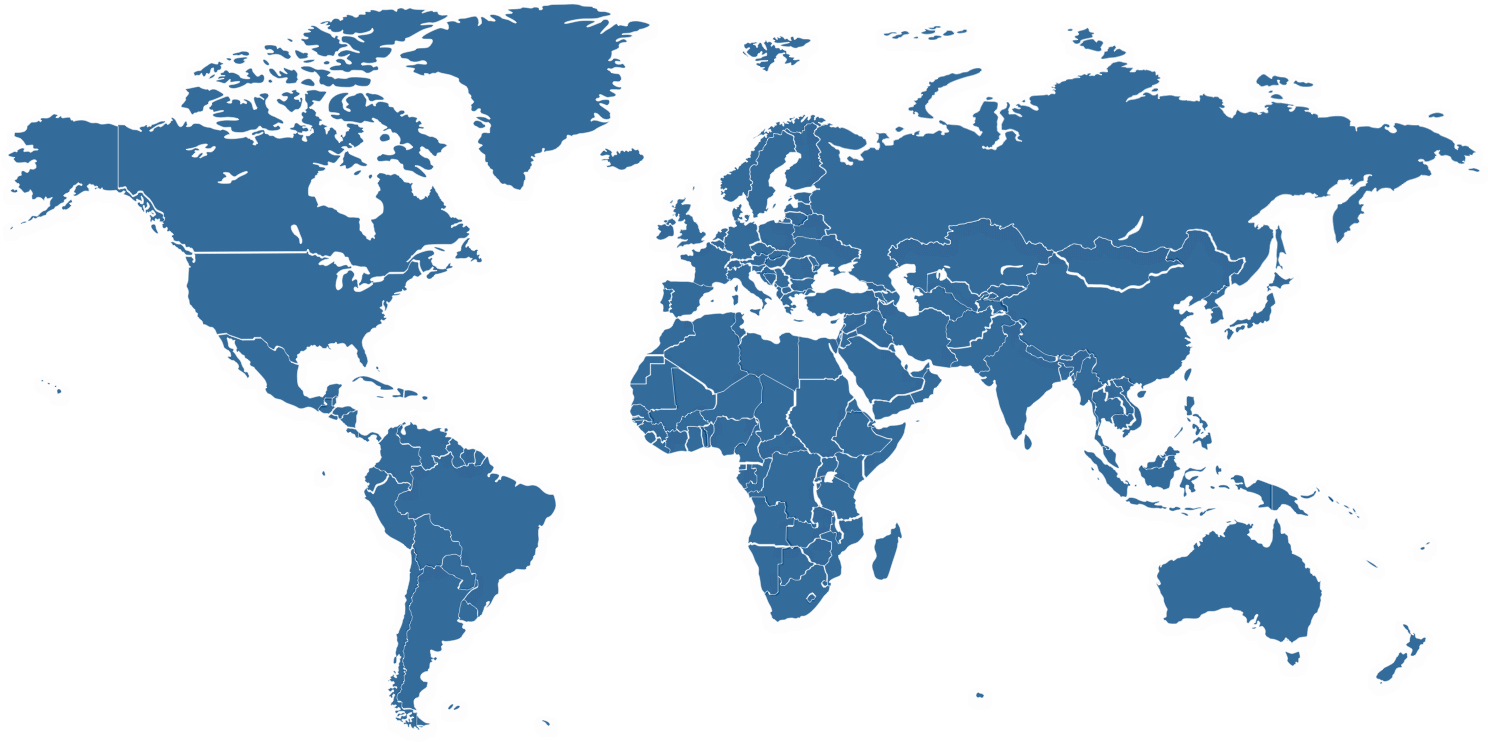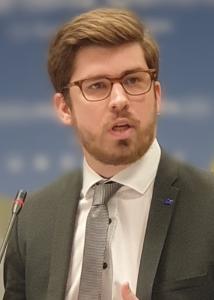1. Overall challenges
22 countries are part of the Mediterranean area, encompassing about 530 million inhabitants, over 200 million on the northern shore and 325 million on the southern and eastern shores. With more than sixty cities on its coastlines, the region is home to nearly 150 million people living in coastal urban areas, representing two-thirds of the region’s total seaside population. Türkiye and Egypt, boosted by their metropolitan areas Cairo (22M hab.) and Istanbul (15M hab.), together account for 55% of the Mediterranean coastal urban population, and the Asian and African shores for 80%, while the EU only for 19%.
Advancing sustainable, resilient and inclusive economic growth and development in the region requires three ingredients: political will and commitment, robust & numerous investment projects, and access to affordable finance. Needless to mention, challenges are daunting and investment needs are massive, not least due to the need to add climate adaptation costs in all sectors to climate mitigation actions and costs, due to the upcoming reconstruction needs in Gaza, Libya or Lebanon, to the demographic and economic growth in several key economies which push up fossil fuel demand, and the various fossil fuel subsidies which are still in place in several economies – Egypt has seen progress in moving to market based prices, but major challenges remain in Algeria and to a lesser extent in Morrocco or Türkiye for example.
2. A multiple and robust financing architecture is already in place
The European Union (EU) and its Member states have been involved via various instruments and policies over past years.
- The EU has used the Neighbourhood policy to channel about €20 bn over 2007-2020 to the region (and further €12 bn for 2021-2027 have been foreseen) and trying to ignite a form of regional engagement via the Barcelona process. Main instruments are the Neighbourhood Investment Platform and the European Fund for Sustainable Development Plus (EFSD+).
- The European Investment Bank (EIB): Since the start of its activity in the different countries of the region, the EIB has financed projects in the field of energy in the southern neighbourhood for 25% of its total financing in the region. In 2023, 52% of the EIB financing went to the energy sector[1]. In 2023, the EIB inaugurated the EIB Global’s regional hub in Cairo to strengthen links with public and private actors in the Middle East and North Africa, which should further boost cooperation opportunities between the EU and the region, especially as the Global Gateway strategy gets deployed. However, EIB lending operations in Türkiye have been frozen since 2019 due to political tensions.
- The EBRD is also committed to boosting sustainable and resilient growth in the region, both in Türkiye on the one hand and in what it calls the southern and eastern Mediterranean region SEMED countries on the other (SEMED Multi-Donor Account): Egypt, Jordan, Morocco, Tunisia, Lebanon and the West Bank and Gaza.
- The EBRD has invested so far over 10.5 billion EUR in more than 230 projects in the SEMED region in areas such as supporting the growth of small and medium-sized enterprises (SMEs), agribusiness, banking services, local capital markets, infrastructure and municipal services, renewable energy and energy efficiency. The EBRD has also stepped up assistance in favour of refugees from the civil war in Syria in past years, with a financing package of 900 million EUR.
- The EBRD has also invested over 20,5 billion EUR in 451 projects in Türkiye.
- Algeria has become a shareholder of the EBRD in 2021 but no investment project has been backed up since then.
- The EBRD Green Cities Programme has already invested 5 billion EUR into 90 projects in 50 EBRD countries of operation, and has just been toped up by a 3 billion EUR additional funding. The programme supports the development of Green City Action Plans, provides technical support to city administrators and local stakeholders to foster the implementation of the Green City Action Plans, and has various financing tools for sustainable infrastructure investment in the areas of water and wastewater, urban transport, district energy, energy efficiency in buildings, solid waste and climate adaptation. Programme projects in the Med region so far include: loan to the building of a dry port at the 6th of October City (Egypt); with the municipality of Agadir (Morocco) subscription to a local currency senior unsecured bond for up to € 93 million equivalent) through a private placement; Provision of a sovereign loan of up to EUR 250 million to Egypt to finance the upgrade and electrification of an existing rail line at Alexandria to improve public transport; a similar programme to upgrade the Cairo metro; Amman, Jordan, with several projects in the field of waste, water treatment, and transport; the modernization of the Izmir metro; the ongoing development of a Green City Action Plan with Istanbul; note also a water purification project in Split (Croatia).
- There are other multi donor funds and programmes:
- A Blue Mediterranean Partnership (BMP) has been set up since COP27 to support transition to a sustainable blue economy in the Mediterranean region, and is to start operating soon. It aims to mobilize at least 1 billion EUR in investments into plastic waste reduction, coastal resilience investments, sustainable tourism, wastewater treatment, circular economy, and marine biodiversity. The BMP will initially focus on Egypt, Jordan and Morocco. This new multi-donor fund will be managed by the EBRD with additional funding from various donors or blending finance, notably the European Commission, national development aid programmes, the EIB. The Union for the Mediterranean (UfM) is to act as facilitator of the political and regulatory dialogue. This comes in addition to other initiatives, such as the WestMED blue economy initiative as part of the ‘5+5 Dialogue’ and supported by DG MARE.
- The Plan d’action pour une Méditerranée exemplaire (PAMEx), created in 2021, aims at designing a policy framework to green the Mediterranean Sea by 2030. Gathering 12 countries (Med EU + Morocco, Algeria, Tunisia and Egypt), it has put 19 initiatives into place and to achieve them has set the PLIFF, a €2.5bn financial instrument, mainly financed by France (MEAE, AFD, Région SUD) and Spain (AECID). €1bn will back green ports initiatives including electrification, renewables and H2 production; €500mn are designed for water and waste treatment and zero plastic initiatives while the remaining €925mn are to incentivise biodiversity conservation (include MPAs) and nature-based from the PLIFF alongside Tunis and Bizerte seaports (Tunisia).
- Moreover, there are other various bilateral public instruments in place, such as Italy’s, France’s, Spain’s, Sweden’s or Germany’s development assistance, which support direct projects or crowd into other funds and initiatives (Cassa Depositi e Prestiti (CDP), Agence française de développement (AFD), AECID, Swedish International Development Agency, Kreditanstalt für Wiederaufbau (KfW), and private initiatives, such as the PRIMA, the partnership for research and innovation in the Mediterranean region, a private foundation.
3. Recommendations
In view of these challenges, building on already existing initiatives and instruments, and building on the opportunity to reengage the region via the newly established DG Med, the European Commission should consider to:
- Focus on sustainable and resilient cities and maritime decarbonization. Share best practices, highlight sound projects in view of multiplying them.
- Foster a Mediterranean community with common responsibilities, common challenges, common commitment and common actions and explore opportunities to step up funding for sustainable investments and sectoral funds via contributions from the tourism industry and also from maritime freight & refueling activities.
- Continue dialogue with Algerian authorities to encourage Algeria to clear the way for becoming recipient of EBRD operations with a priority for sustainable cities, port decarbonization, electricity generation modernization and decarbonization.
- Resume EIB-Türkiye cooperation and encourage the EIB to focus on supporting sustainable investments that can benefit the Mediterranean region as a whole (sustainable cities, sustainable and resilient infrastructure, low carbon energy projects, maritime decarbonization).
4. Priority proposals for sustainable, resilient and integrative investment
--> Maritime transport and decarbonization: The Mediterranean is home to some of the most important seaports in international maritime freights, and cargo volume into and from the Mediterranean has been increasing over past years (with some variations following covid and the Red Sea closure). Decarbonising shipping is a serious challenge that must be addressed. Just a handful of LNG powered ships are operating in the region, and the establishment of a Med SOx emission control area (Med SOx ECA) by January 2025 looks possible in most cases, but going further will be very challenging. The ETS2 inclusion of maritime transportation can steer tensions. Dozens of ports need to be electrified for ship docking, and low carbon fuels & bunkering services have to be developed for biofuels, efuels, ammonia, methane, CCUS, bioLNG… Hundreds of vessels in the region will need to be modernized or scrubbed, with new orders passed that run on lower carbon fuels and solutions.
CETMO is an organization created in 1985 with a UN mandate, to promote the advancement of transport and logistics in the Mediterranean region, and became the Technical Secretariat of GTMO 5+5, the international cooperation body for policy making and transport planning across ten European and African Mediterranean countries, in 1997. The organization reports that there are about 90 major ports around the Mediterranean, the leading ones being Barcelona, Piareus, Valencia, Algesiras, Tangier Med, Marseille, Mersin, Alexandria, Genova, Gioia Tauro. While there is a lot of short sea shipping, and cruise ship traffic, international container trade has also been growing in past years, not least due to the expansion of transshipments hubs. The Med is both a hub between the Atlantic and Gulf/Indian ocean, and a destination, with thousands of cargo ships travelling every day. All this cargo and these vessels (based on their fueling operations for example) could be mobilized to make financial contributions for sustainable projects of common regional interest, which would be negligible at a unit scale, but with the mass, and provided that all ports participate, could make a huge difference – sustainable cargoes would be exempted. Moreover, initiatives such as a Trans-Mediterranean eco-incentive scheme whereby low carbon fuels and solutions could be subsidized using taxes on fossil fuels and other environmental revenues could be further explored. These issues are of special importance also in view of the UN Ocean Conference (UNOC) to be held under French and Costa Rican presidency in June 2025 in Nice, and where a strong emphasis will be put on the Mediterranean region.
--> Focus on sustainable and resilient cities and on demand side policies: Cities in the Mediterranean are a cornerstone of regional policies, especially in the non-EU Mediterranean shores. Whilst some Southern Mediterranean governments are actively subsidising energy, ranging from Algeria (9% of GDP in 2021) to Türkiye (3% of GDP in 2023), too low attention is paid to demand-side and energy efficiency policies despite their cost-effectiveness. Though, some examples highlight the potential of well-targeted policies and investments. There are a multiple of good examples that could serve as a basis for best practices in the region, and be replicated. In Egypt, the $200 million Greater Cairo Air Pollution Management and Climate Change Project was launched in order to fight Cairo air pollution that causes 12,000 deaths a year and hinders growth in the whole country (around 1,4% of country’s GDP). In Türkiye, the €300 million Istanbul Waste-to-energy power plant incinerates 15% of Istanbul's daily domestic waste, generating 630 GWh of net electricity per year (consumption of 1,4 million Istanbulite). In the city of Mersin, the EBRD granted a $22 million loan to renew the public transportation with electric buses, saving more than 20,000 tons of CO2 annually. In Tunisia, the $2,4 million large-scale LED deployment program led to annual savings of 278 GWh for $21,5 million and 190,000 tons of CO2. In Morocco, the municipality of Tangier developed a wastewater treatment plant for €5,6 million, saving 3 million m3/year and providing 265 ha of land with spraying. In France, Marseille-Fos is about to become the first fully electrified port scheme “Zero Smoke Stopover” to curtail ship’s motors air pollution which accounts for 40% of the city’s total nitrogen oxide emissions and 33% of sulfur oxide ones.
--> Gathering new and more sources of funding in mobilizing Mediterranean resources: while the emphasis in rightly put on fostering public-private partnerships and blended finance, investment initiatives are generally one-sided, and finance comes from the Northern entities to benefit southern and East entities. This creates a disbalance and is an obstacle to developing a Mediterranean community with common responsibilities, common challenges, common commitment and common actions. There needs to be a greater regional ownership of initiatives and instruments in order to foster regional commitment and financial means for action, not least also because Gaza and Lebanon reconstruction can be expected to mobilize a significant share of available public funding. Moreover, the Mediterranean region is not only impacted by its permanent inhabitants and economic activities, but also increasingly, by international tourism. The Mediterranean is the world’s leading tourism area, accounting for 35% of all international tourist arrivals and 30% of global tourism receipts. Mediterranean tourism also accounts for 13% of Mediterranean countries’ exports and 23% of the service sector. Among the top destinations in 2023 are Spain (144, 8 million), France (100 million), Italy (57 million), Türkiye (49 million), Greece (32 million), Egypt (14,9 million), Morocco (14,5 million), Tunisia (8.8 million), Jordan (6.3 million), Cyprus (3.8 million), Algeria (2.5 million). Tourism is a source of massive employment, economic growth, but also comes with multiple challenges for biodiversity and climate preservation. Tourists often face local municipality taxes in hotels, can pay visas for accessing visiting states, and could make further financial contribution to supporting sustainability investment in the region. Out of the roughly 430 million visitors in Mediterranean region countries, a large share visits major coastal cities or resorts. The number of visitors in Med countries is expected to increase beyond 600 million by 2030. Tourism could thus offer a major source of funding, in the range of 1 to 2 billion EUR per year, if these tourists are taxed an extra 5 to 10 EUR on arrival at ports or airports. Given that tourism visits and receipts are rather predictable, this inflow of resources could also be used to set up bond issuances in order to maximise investment volumes in the short run, provided that a sufficient number of Mediterranean states participate and agree to give a guarantee. For example, 10 billion EUR could be borrowed on international markets, backed by future tourism tax revenues from contributing states, and could then be invested into various existing initiatives or support new ones, such as sustainable fishing, sustainable agriculture, sustainable water management.
[1] The distribution of EIB investments over the cooperation period amounts to: Türkiye: €30 billion, Egypt: €15.1 billion, Morocco: €9.8 billion, Tunisia: €7.4 billion, Jordan: €3.4 billion, Israel: €2.9 billion, Lebanon: €2.8 billion, Algeria: €2.7 billion, Syria (until 2010): €1.7 billion, and Palestine: €0.7 billion.
Über diese Reihe
„Europäische Union Klima und Energie“ ist eine Rubrik mit einer Reihe von Berichten und anderen Veröffentlichungen, die Einblick in die Ziele der EU im Bereich der Klima- und Energiepolitik geben. Jede Publikation in dieser Reihe konzentriert sich entweder auf das globale Engagement der EU für eine nachhaltige Klima- und Energiepolitik oder darauf, wie sich Klima- und Energieziele von Partnerländern auf die EU auswirken. Diese Reihe soll ein umfassendes Verständnis der EU-Strategien im Bereich der nachhaltigen Energiekooperation, der Anpassung an den Klimawandel und dessen Eindämmung sowie ihrer Partnerschaftspolitik im Bereich Klima und Energie vermitteln.

Nicole Linsenbold





